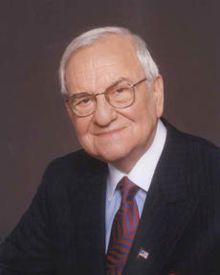The predictions are beginning to come true, it seems. No sooner was the ink dry on the UAW contract than Chrysler started firing workers wholesale. It plans to eliminate half the people working for it by 2010. As many as 10,000 hourly employees will lose their jobs next year.
This will cut the unionized workers at Chrysler almost in half: from 47,000 to 24,000.
On top of that, 1,000 more white collar employees – beyond the 2,000 which the company previously said would be eliminated - will be shown the door and the company will also eliminate 37% of the “supplemental employment” workers, i.e., the lower wage tier hourly workers. All overtime is also eliminated.
Against this, the company says it will introduce precisely two new models in the next 14 months – one of which is the new Dodge Ram, jumping into a soft truck market – and also introduce hybrid versions of the Durango/Aspen.
So, are all the job cuts just part of the predictable Cerberus game plan?
Or, is Cerberus beginning to worry that they might be in over their heads?
Nardelli released a statement saying that “he market has changed dramatically” since the original Chrysler restructuring plan developed by co-vice president Tom LaSorda was developed this past February. This is the exact same plan that Nardelli said three months ago that he intended to follow. The employee cuts announced by the company are deeper and broader than implied by that plan, or expected by insiders in the auto industry and investment analysts.
How, exactly, has the “market changed?”
October sales for General Motors were up 3.3% from a year ago. The increase was partly due to increased truck sales, but the fact that it was able to sell as many cars as it had last year made that increase possible. In fact, GM was almost on pace with Toyota, which increased sales 4.5% from a year before. Ford dropped by 9.3%, which included a 26% drop in automobile sales attributed to reductions in fleet sales to rental car companies. Nissan sales were up 13%. Chrysler’s October sales were off 9%, comprised of car sales which were up 12% and truck sales which were down 14%. Cars that people want are selling. Cars that people don’t want are not selling. Nothing has changed.
It is beginning to look as though Cerberus miscalculated. The job eliminations do not give the impression of an orderly, planned restructuring. They give the impression of desperation, of throwing everything off the boat that isn’t absolutely necessary to keep it floating.
That Cerberus could come in, inject $12 billion in new capital – a relative drop in the bucket in a business in which that’s enough to develop one new model, maybe two – make some changes, and then make a profit, was always a bit fantastic.
The last hit model Chrysler developed was the 300/Charger. That car was based on the previous generation E Class Mercedes-Benz platform and used a Mercedes-Benz transmission. All of that saved both development expense and development time. Chrysler no longer has that advantage. Chrysler’s “Hail Mary” attempt to get a subcompact from Chery in China is going nowhere, which means they either won’t have a car that size or they’ll have to develop it themselves. Chrysler is looking to buy a platform for another small car, presumably because they don’t have either the money or the time to do it themselves.
Dumping half the employees is certainly going to save money for Chrysler, but it gives the overall impression that the company is looking at things getting worse – a lot worse – before there is any chance they’ll get better. They’re not so much cutting costs as they’re trying to buy time.
Perhaps even worse for Chrysler, that’s what it looks like they’re doing. What does announcing that you’re cutting half your employees say to your prospective customers? That you’re confident of a bright future filled with growth and exciting new products? Or does it say that you’re hanging on by your financial fingernails and you’re desperate.
When Lee Iacocca took over Chrysler many years ago, at a point when the company was teetering on the edge of bankruptcy, he did two things. First, he looked at what the company had in the product pipeline and decided to bet the farm on the small K-car: one platform upon which the company would concentrate its resources and efforts. Second, he borrowed a bunch of money to finance developing that car and keep the company afloat until they were in dealer showrooms. To do that, he needed a lot of money – so he schmoozed Congress into guaranteeing the loans from the banks.
When the K car was ready, Iacocca sold the company to the customers. Putting the boss on camera wasn’t Iacocca’s idea. But he was wise enough to appreciate it when the ad agency suggested it. Speaking for Chrysler, he introduced the K-car, explained why it was a good car, and then said “We want to be your car company.”
Iacocca understood that he had to sell the company to the customers before they would be willing to buy a car made by the company. It was the future of the company he was selling, as much as the car. When he told the people that the future was bright because the car was good, he sold both.
Chrysler just told the world it was canning half its employees, right after cutting a deal with the UAW that almost didn’t go through because over 40% of the employees didn’t think they’d be able to keep their jobs. Not only does Chrysler’s management come out looking exactly as tricky and mercenary as Nardelli is generally thought to be, but the whole company comes out looking dishonest. They could have told the workers this plan two weeks ago. The contract wouldn’t have passed, and they knew it.
Want to buy a car from guys like these?

